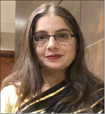Translate this page into:
Nanobyte - Perspectives and milestones in molecular biology and immuno-oncology

*Radhika A. Vaishnav, Department of Molecular Informatics, Natureka Life Sciences, Vadodara, Gujarat, India. radhikavaishnav@gmail.com
-
Received: ,
Accepted: ,
IMMUNOTHERAPY OUTLOOK FOR 2019
A decade ago, we were not discussing chimeric antigen receptor-T cells, adoptive cell transfer, tumor-infiltrating lymphocytes or checkpoint inhibitors in the oncology clinic. Today, the promise of immunotherapy has moved from bench to bedside and is a changing the treatment landscape worldwide. At the time of this publication, 2532 clinical trials [Table 1] were registered (and in various stages) at the national library of medicine[1] under search terms “cancer” and “immunotherapy.” This is an exciting juncture in oncology with many unanswered questions, and much to learn and contribute across scientific and clinical disciplines.
| Terms | Search results* | Entire database** |
|---|---|---|
| Synonyms | ||
| Immunotherapy | 2532 studies | 3510 studies |
| Immunomodulatory agent | 40 studies | 65 studies |
| Immunomodulator | 37 studies | 163 studies |
| Immune modulators | 22 studies | 40 studies |
| Immunotherapeutic agent | 14 studies | 21 studies |
| Biological response modifiers | 7 studies | 13 studies |
| Immunomodulating agent | 4 studies | 12 studies |
| Immune regulators | 4 studies | 7 studies |
| Immunological therapy | 4 studies | 4 studies |
| Immune mediators | 3 studies | 15 studies |
| Biomodulators | 1 studies | 3 studies |
| Immunologically directed therapy | 1 studies | 1 studies |
| Cancer | 2532 studies | 65,620 studies |
| Neoplasm | 2375 studies | 57,466 studies |
| Tumor | 943 studies | 14,694 studies |
| Malignancy | 145 studies | 2838 studies |
| Oncology | 40 studies | 1019 studies |
| Neoplastic syndrome | 9 studies | 548 studies |
| Neoplasia | 8 studies | 564 studies |
| Neoplastic disease | -- | 19 studies |
-- No studies found.
BASIC SCIENCE BYTE: MUTATIONAL BURDEN IN “HEALTHY” TISSUE
A 2018 study reported in science showed that mutations in 14 genes that are normally associated with cancer accumulated in non-cancerous esophageal epithelium with aging.[2,3] They observed that, among others, TP53 and NOTCH1 mutations were highly prevalent in the normal esophagus. Remarkably, NOTCH1 mutations were higher in normal than in cancerous esophageal epithelium. Based on the results, the authors hypothesized that several clones of cells harboring mutations were growing throughout body tissues, competing for resources, and keeping each other in check. They cautioned that one must be aware that the existence of mutations associated with cancer did not imply the existence of cancer. Furthermore, the study re-emphasized the need to understand the role of spontaneous mutations in physiology and pathophysiology in the absence of any obvious external mutagen.
A TRIBUTE TO TWO PIONEERS OF IMMUNO ONCOLOGY
In 1987, Susumu Tonegawa (born in 1939) was awarded the Nobel Prize in Physiology and Medicine for his discovery of the genetic basis of antibody diversity.[4,5] From humble beginnings, he pursued his education in Chemistry at the University of Kyoto during the post-World War II era turmoil. He was fascinated by the research in Molecular Biology unraveling in the 1950s and ‘60s. He began his doctoral research on SV40 in the United States and subsequently joined the Basel Institute of Immunology, Switzerland, where he was at the forefront of the new and hot field of Molecular Immunology. Restriction enzyme technology and Southern blotting were allowing researchers like Tonegawa in the early 1970s to pursue the question of a genetic role in the variability of immunoglobulin (IgS).
Fast forward a few decades the Nobel Prize in Physiology and Medicine 2018 was awarded to Tasuku Honjo and James P. Allison for their “discovery of cancer therapy by inhibition of negative immune regulation.”[6] Honjo (born 1942), also a chemist by training, was fervently studying Ig class-switching (to produce Ig isotypes) in the 1970s. His academic journey began at Kyoto, Japan and came full circle as he returned to Kyoto after several years and made the groundbreaking discovery of the protein programmed cell death-1 (PD-1) in the 1990s. In the early 2000s, Honjo and his team showed in animal models that PD-1 inhibition allowed T cells to target and destroy cancer cells.
Tasuku Honjo, currently, continues research in understanding the basic mechanisms of Ig class switching. Concurrently, Susumu Tonegawa, after unraveling the genetic recombination mechanism of antibodies, went on to study other challenging unanswered questions in immunology and neuroscience, and he continues to do so today at the Massachusetts Institute of Technology, United States.
As the field of molecular biology and immuno-oncology rapidly advance in today’s world, we owe much to the insightful and relentless work of those who were undeterred by geographical, technological, and socio-political hurdles as they pushed our boundaries of knowledge.
REFERENCES
- National Library of Medicine. Available from: https://www.clinicaltrials.gov/ct2/results/details?term=immunotherapy&cond=Cancer. [Last accessed on 2019 Jan 09]
- Somatic mutant clones colonize the human esophagus with age. Science. 2018;362:911-7.
- [Google Scholar]
- Roitt's Essential Immunology (13th ed). Hoboken: John Wiley and Sons, Inc; 2017. p. :88.
- Biographical, from Les Prix Nobel. 1988. The Nobel Prizes 1987. Available from: https://www.nobelprize.org/prizes/medicine/1987/tonegawa/biographical. [Last accessed on 2019 Jan 09]
- [Google Scholar]
- Facts. 2018. Nobel Prize. Available from: https://www.nobelprize.org/prizes/medicine/2018/honjo/facts. [Last accessed on 2019 Jan 09]
- [Google Scholar]





